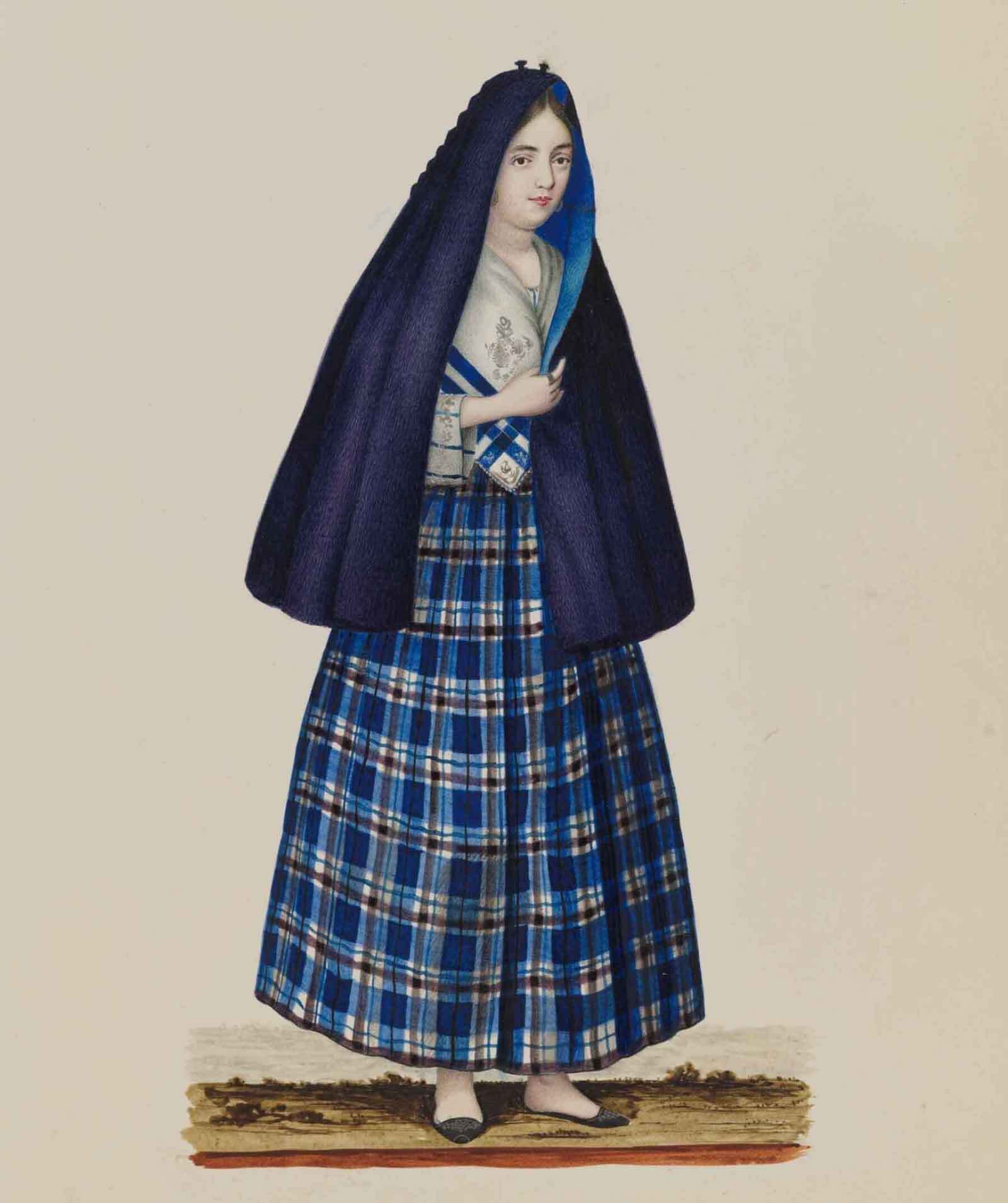In the early 19th century, a European and American vogue for “Empire” style dresses fashioned from lightweight Indian muslin, worn together with colorful Kashmiri shawls, drove a lucrative portion of the export textile trade in India.
PEM is lucky to hold important collections of both kinds of objects, many of which were obtained or worn by Salem residents. When planning the Sean M. Healy Gallery of Asian Export Art, which opened in September 2019, one of the most exciting prospects was the ability to display these and other export textiles from our collections for the first time. In the gallery we explore Asian textiles as an engine for international trade and a catalyst for transforming furnishings and fashions across the globe. The examples on display help us to illustrate the seductive tactile and aesthetic qualities of the foreign fabrics that merchants and consumers were so eager to obtain.

But exhibiting works like this presents a special kind of challenge. We can only display them for a limited amount of time before they need to be exchanged for a different object. In fact, if you have had the pleasure of visiting the gallery in the last month, you may have noticed that select new objects, such as colorful Indian palampore (or bedspread) or the Chinese watercolor of a woman in the Philippines, have made their way into the installation to replace others. You may wonder: why do we change out certain objects in the gallery and not others?

Artists in Guangzhou, China. Woman in the Philippines, about 1840. After Justiniano Asuncion 1816–1901, the Philippines. Opaque watercolor on paper. Museum purchase, Augustine Heard Collection, 1931.
A watercolor painting of a woman in the Philippines recently added the gallery.
The primary answer is a matter of conservation. All works of art are susceptible to degradation over time, but this is particularly true of objects containing fragile organic materials. Minimizing the amount of time these objects are exposed to potential environmental harm is an important aspect of stewarding the collection and ensuring its long-term preservation.
Artists in Guangzhou, China. Woman in the Philippines, about 1840. After Justiniano Asuncion 1816–1901, the Philippines. Opaque watercolor on paper. Museum purchase, Augustine Heard Collection, 1931.
For this reason, we keep a schedule of what we call “rotations,” in which objects are displayed for a determined length of time (usually 6-12 months) before they are substituted for a new object. Historic textiles require particular care. Organic textile fibers,pigments, and dyes deteriorate with exposure to light, humidity, and certain atmospheric conditions. You may notice how quickly fabrics in your own home can degrade - for example, your curtains are likely duller on the side where they face the window. Other vulnerable objects that require rotation include works on paper and photography.

While planning for rotations can be labor intensive, it is a worthwhile process that allows us to display fragile objects, even if briefly. In selecting Indian cotton dresses and Kashmiri shawls to exhibit, we gathered with Dr. Anne Higonnet of Columbia University, whose recent research has centered on muslin dresses in Europe, as well as several conservators from Windsor Conservation. Together, we spent a day in PEM’s storage space reviewing dresses and shawls, assessing their condition, and discussing the large variety of styles, ornament, and construction methods that we came across. We are grateful to all those who participated in this review, as their expertise enormously benefited our understanding of objects in our collection. After some consideration and research, we selected exemplary examples that could also withstand display and conservation. From there, the team of conservators at Windsor Conservation carefully cleaned and conserved each dress and shawl, making recommendations for display, and even outfitting us with the correct undergarments to suit each silhouette. This process provided us with several years worth of objects that could be rotated annually in the gallery, while enriching our narrative in the gallery.
Rotating objects has also afforded us the added opportunity to ensure that more of our collection is seen by the public. It can be difficult during the planning phases of a gallery to narrow the selection of objects, particularly in areas where the collection is rich. Rotations allow a greater portion of these objects to be seen and considered within the context of the gallery’s themes. One example of this is in our display of Dutch market Indian textiles in the Veldman-Eecen Collection. Purchased by PEM in 2012, the collection contains 18th century Indian textiles which were fashioned in the Netherlands into garments, palampores, and baby clothing. Vibrantly decorated with twisting botanical motifs in richly saturated colors, the collection is a feast for the eyes as much as it is an important historical record of European taste for foreign textiles. With over 170 objects in the collection, rotating these objects annually means that more of this fascinating group of objects can be viewed over the life of the gallery.

Rotating objects in the gallery is as much a necessity for an object’s safety, as it is an opportunity to put new objects on view. As the Asian Export Art gallery evolves with these changes over time, we hope that the new objects on display will bring fresh perspective and inspiration to your visit.
Keep exploring
Blog
Every eleven minutes
5 min read

Blog
If These Walls Could Speak
6 min read

Blog
Reunited in the galleries
6 min read

Blog
What is blue and white, makes you smarter and cracks you up?
8 min read

